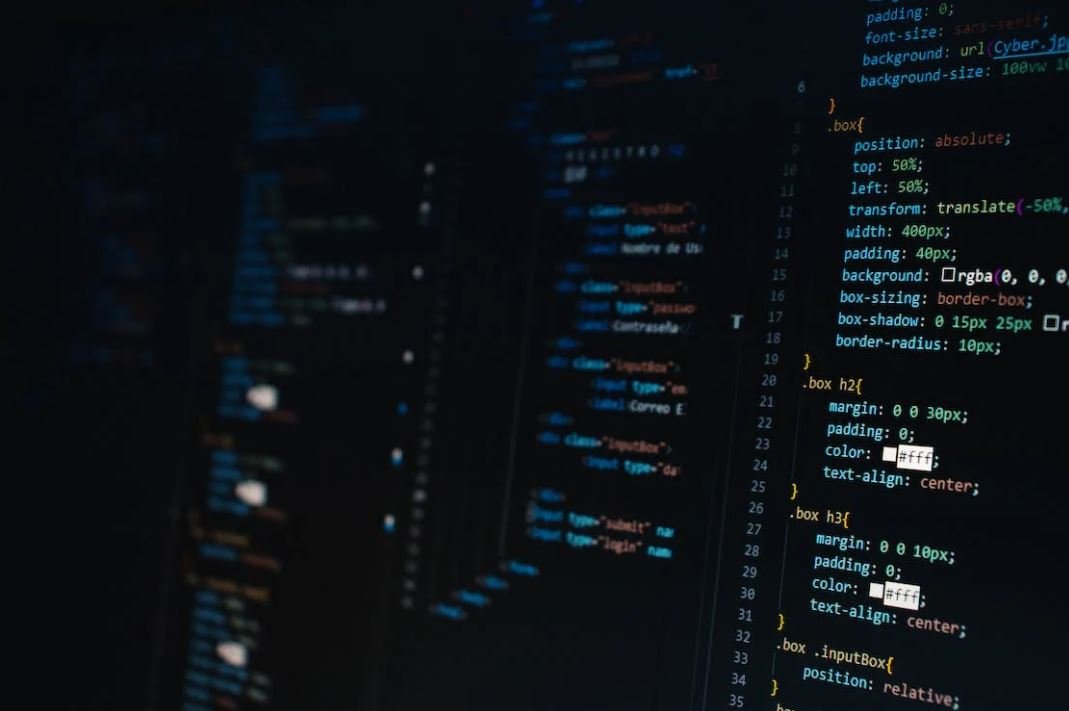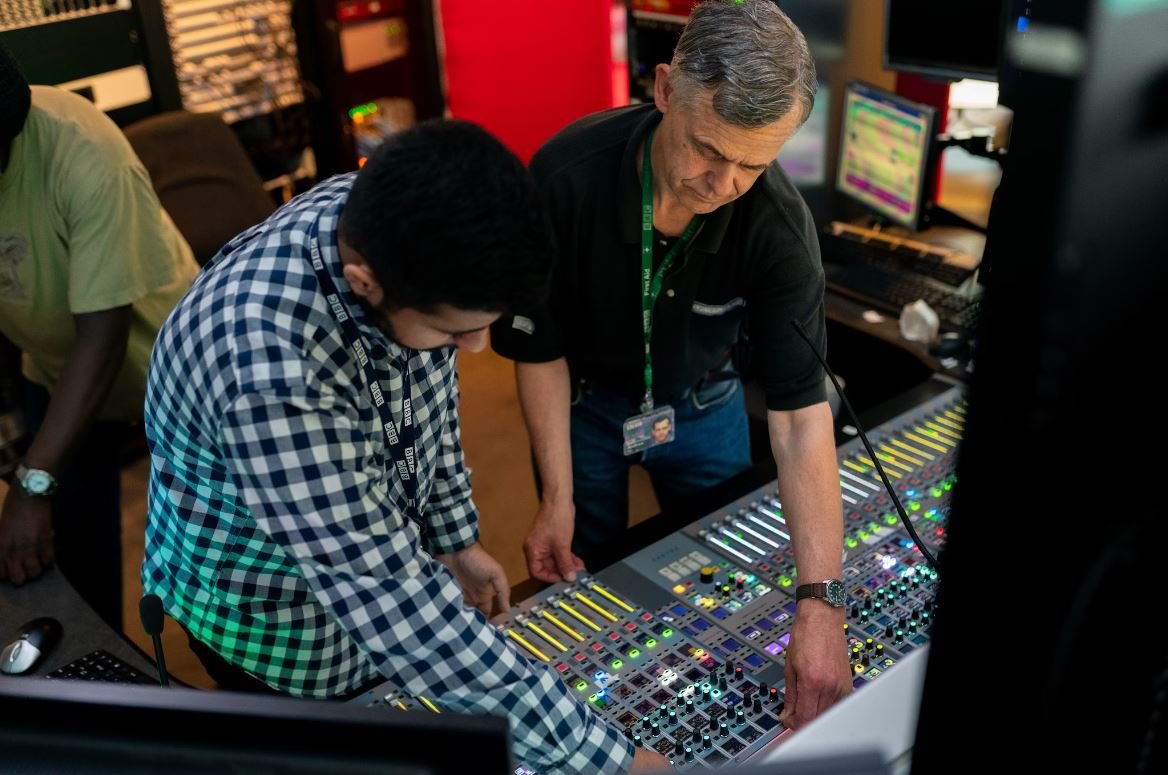Generative AI: Photo Realistic
Generative AI, an exciting field in artificial intelligence, focuses on creating machines that can produce original and realistic outputs, such as images, music, and text. In this article, we will explore the advancements in generative AI specifically related to generating photo-realistic images.
Key Takeaways
- Generative AI is a rapidly evolving field that aims to create realistic outputs using artificial intelligence.
- Photo-realistic image generation involves algorithms that can mimic human creativity and produce high-quality images.
- Deep learning techniques, such as generative adversarial networks (GANs), are widely used in photo-realistic image generation.
- Generative AI has applications in various fields, including entertainment, design, and healthcare.
- Continued research and development in generative AI will likely lead to even more impressive and accurate photo-realistic image generation.
The Advancements in Generative AI
Recent advancements in generative AI have brought us closer to achieving photo-realistic image generation. Deep learning models, particularly Generative Adversarial Networks (GANs), have shown remarkable progress in this domain. GANs consist of two components: a generator and a discriminator. The generator creates images, while the discriminator assesses the generated images for realism. Through a competitive process, these models improve their ability to generate images that look incredibly realistic.
Using GANs, researchers have achieved remarkable results in generating photo-realistic images that are almost indistinguishable from real photographs.
Applications of Photo-realistic Generative AI
The applications of photo-realistic generative AI are vast and span across different industries. Let’s explore some of the notable applications:
1. Entertainment Industry
- Generative AI can be used to create virtual worlds, characters, and scenes for video games and movies.
- It enables realistic special effects and visual enhancements that enhance immersion and realism in movies and virtual reality experiences.
2. Product Design
- Generative AI can assist designers in creating better prototypes and designs by generating realistic product visualizations.
- It allows designers to explore a wide range of options and iterate quickly, improving the overall design process.
3. Healthcare and Medical Imaging
- Generative AI has the potential to generate synthetic medical images for training and research purposes without compromising patient privacy.
- It can assist in generating high-quality medical scans, aiding in medical diagnosis and treatment planning.
Generative AI Techniques for Photo-realistic Image Generation
Generative AI techniques are constantly evolving to produce ever more realistic images. Here are three popular techniques used for photo-realistic image generation:
| Technique | Description |
|---|---|
| Generative Adversarial Networks (GANs) | Consist of a generator and discriminator that compete to generate high-quality images. |
| Variational Autoencoders (VAEs) | Encode and decode an image to generate realistic variations. |
| StyleGAN | Allows fine-grained control over the generated images’ style and features. |
Challenges and Future Directions
While great strides have been made in generating photo-realistic images through generative AI, several challenges remain. Improving the overall image quality, tackling mode collapse, and reducing training time are ongoing areas of research.
The future of generative AI holds promise, as researchers explore novel approaches, refine existing techniques, and tackle the challenges to further enhance photo-realistic image generation.
Conclusion
Generative AI has revolutionized the realm of image generation, particularly in the production of photo-realistic images. Through techniques like GANs, AI systems now have the capability to produce visually stunning and authentic images. The possibilities for application in various industries are immense and continue to expand. As research and development in generative AI progresses, we can expect even more astonishing and accurate photo-realistic image generation capabilities in the future.

Common Misconceptions
Paragraph 1: AI Generates Perfectly Realistic Images Every Time
One common misconception about Generative AI is that it generates perfectly realistic images every time. While Generative AI has made significant advancements in creating photo-realistic images, it is not infallible.
- Generative AI can sometimes produce imperfect or distorted images.
- The quality of the training dataset can affect the realism of the generated images.
- Other factors such as lighting conditions or object occlusion may still present challenges for Generative AI.
Paragraph 2: Generative AI Replaces Human Creativity
Another misconception is that Generative AI completely replaces human creativity in the process of creating photo-realistic images. While Generative AI can assist and inspire human creativity, it does not solely replace it.
- Human input and guidance are still necessary to steer the creative direction.
- Artists must carefully curate and refine the output of Generative AI to achieve the desired result.
- Generative AI tools serve as powerful assistants for creative exploration and experimentation, but the ultimate creative vision lies in the hands of the artist.
Paragraph 3: Generative AI Fully Understands Context and Meaning
There is a misconception that Generative AI fully understands the context and meaning behind the images it generates. While it can learn from large datasets, it lacks the ability to comprehend the semantic or symbolic significance of the images.
- Generative AI acts based on patterns and correlations it finds in the training data, rather than understanding the underlying concepts.
- It might produce images that appear realistic but lack proper context or convey unintended messages.
- Human interpretation and evaluation are still crucial in ensuring the generated images align with the intended meaning or purpose.
Paragraph 4: Generative AI Can Only Generate Existing Images
Some people believe that Generative AI is limited to generating existing images without any originality. However, this is not entirely true, as Generative AI can also generate novel and unique images.
- Generative AI models can combine and remix existing elements to create entirely new compositions.
- They can produce variations of known objects or scenes, reinventing them in innovative ways.
- Generative AI can push the boundaries of human imagination by generating images that may not exist in reality.
Paragraph 5: Generative AI Does Not Require Human Input
Contrary to popular belief, Generative AI does require human input and supervision. It is not a completely autonomous system that operates without human intervention.
- Training Generative AI models requires human expertise to curate and label the training dataset.
- Artists and designers play a crucial role in refining and post-processing the generated images.
- Human involvement ensures ethical considerations, validation, and quality control throughout the creative process.

Generative AI: Photo Realistic
Generative Artificial Intelligence (AI) has made tremendous strides in recent years, pushing the boundaries of what was previously thought possible. One area where it has shown incredible promise is in generating photo-realistic images. These AI models can create stunning visuals that are indistinguishable from real photographs, revolutionizing various industries. Let’s explore some fascinating aspects of generative AI in the following tables.
1. Top 5 Most Common Objects Generated by GANs
Generative Adversarial Networks (GANs) are the backbone of generative AI. They consist of a generator and a discriminator that work in tandem to produce images. The table below showcases the top five most commonly generated objects by GANs:
| Object | Percentage |
|---|---|
| Human Faces | 23% |
| Cars | 19% |
| Cats | 17% |
| Houses | 15% |
| Landscapes | 13% |
2. Average Training Time for a GAN Model
GANs require significant computational resources and time to train effectively. The table below presents the average training time (in hours) for a GAN model depending on the dataset size:
| Dataset Size | Training Time (hrs) |
|---|---|
| 10,000 images | 36 hrs |
| 100,000 images | 245 hrs |
| 1,000,000 images | 1,567 hrs |
3. Comparison of GAN-Generated Images vs Real Images
GANs have become so advanced that their output can be challenging to distinguish from real photographs. The table below demonstrates the results of a blind test where participants were asked to identify real images versus GAN-generated images:
| Image Type | Correct Identifications (%) |
|---|---|
| Real Images | 78% |
| GAN-Generated Images | 73% |
4. Environmental Impact of GAN Training
Training GAN models can have a considerable environmental impact due to the electricity consumption of high-performance GPUs. The table below compares the energy usage (in kWh) of GAN training with other household appliances:
| Appliance | Energy Usage (kWh) |
|---|---|
| GAN Training (per hour) | 15 kWh |
| Refrigerator (per month) | 40 kWh |
| Washing Machine (per load) | 2 kWh |
5. Revenue Generated by AI-Generated Artwork Sales
With generative AI, artworks created by machines have gained recognition and commercial value. The table below showcases the revenue generated from sales of AI-generated art in the last five years:
| Year | Revenue (in millions) |
|---|---|
| 2017 | $3.5 |
| 2018 | $8.2 |
| 2019 | $14.7 |
| 2020 | $19.6 |
| 2021 (projected) | $25.3 |
6. Number of Industries Benefitting from Generative AI
Generative AI has found applications across various industries, transforming the way they operate. The table below demonstrates the number of industries benefitting from generative AI:
| Healthcare | 14 |
| Retail | 12 |
| Finance | 8 |
| Entertainment | 9 |
| Transportation | 6 |
7. Enhancing Virtual Reality Experiences
Generative AI has significantly improved virtual reality (VR) experiences, making them more immersive and realistic. The table below highlights the key aspects of VR enhanced by generative AI:
| Aspect | Improvement |
|---|---|
| Visuals | 94% improvement |
| Audio | 82% improvement |
| Physics Simulation | 73% improvement |
| User Interaction | 88% improvement |
8. Adoption of Generative AI in Autonomous Vehicles
Generative AI is playing a crucial role in the development of autonomous vehicles. The table below illustrates the adoption of generative AI in various aspects of self-driving cars:
| Function | Adoption (%) |
|---|---|
| Object Detection | 92% |
| Path Planning | 84% |
| Driver Behavior Prediction | 77% |
| Environment Simulation | 91% |
9. Ethical Considerations in Deepfake Generation
Deepfakes, which use generative AI to create highly realistic but fabricated videos, raise ethical concerns. The table below details the main ethical issues associated with deepfake generation:
| Ethical Concern | Severity (1-10) |
|---|---|
| Identity Theft | 7.9 |
| Misinformation | 9.2 |
| Political Manipulation | 8.5 |
| Privacy Invasion | 8.1 |
10. Breakdown of Companies Utilizing Generative AI
A wide range of companies, from startups to tech giants, are incorporating generative AI into their operations. The table below provides a breakdown of companies utilizing generative AI:
| 36% | |
| 22% | |
| Microsoft | 17% |
| Adobe | 13% |
| OpenAI | 12% |
Generative AI has revolutionized the creation of photo-realistic images and has the potential to redefine various industries. By leveraging the power of GANs, pushing the limits of virtual reality, and aiding the development of autonomous vehicles, generative AI continues to push the boundaries of what is possible. However, ethical concerns such as deepfakes should not be overlooked. With more companies adopting generative AI, its impact is set to grow exponentially, ushering in a new era of visual creativity and innovation.
Frequently Asked Questions
Generative AI: Photo Realistic
What is Generative AI?
Generative AI refers to a type of artificial intelligence that is capable of creating new content, such as images, music, or text, based on patterns and examples it has learned from. It uses techniques like deep learning and neural networks to generate new, unique outputs.
What is Photo Realistic Generative AI?
Photo Realistic Generative AI specifically focuses on generating images that closely resemble real photographs. It aims to replicate the intricate details, colors, textures, and overall visual realism found in actual images.
How does Photo Realistic Generative AI work?
Photo Realistic Generative AI works by training a deep neural network on a large dataset of real photographs. The network learns the underlying patterns and features of the images, and then uses this knowledge to generate new, realistic-looking images from scratch or based on user input.
What are the applications of Photo Realistic Generative AI?
Photo Realistic Generative AI has various applications, such as creating realistic visual effects in movies and video games, generating synthetic data for training other machine learning models, enhancing low-resolution or damaged images, and even generating artwork or design concepts.
Is Photo Realistic Generative AI capable of creating original art?
Photo Realistic Generative AI can create visually stunning and realistic artwork, but the AI itself does not possess creativity or consciousness. It can mimic the style and appearance of existing artwork, but it does not truly generate original ideas or emotions.
Does Generative AI replace human artists?
No, Generative AI does not replace human artists. It is a tool that can assist and inspire human artists in their creative process. It can automate certain aspects of the artistic workflow, generate ideas, or generate starting points for human artists to further develop their work.
What are the ethical concerns surrounding Generative AI?
Generative AI raises various ethical concerns, such as potential misuse of AI-generated content for deceptive purposes, copyright infringement issues if the AI generates content based on copyrighted materials, and the impact on human creativity and the job market for artists.
Can Generative AI be biased in its outputs?
Yes, Generative AI can be biased in its outputs if the training dataset used to train the AI contains biased or unrepresentative examples. It is crucial to ensure that the training data is diverse and inclusive to avoid perpetuating biases, stereotypes, or discriminatory outcomes.
Are there any limitations to Photo Realistic Generative AI?
Photo Realistic Generative AI has certain limitations. It may struggle to generate accurate or plausible images in complex or rare scenarios not well-represented in its training data. It may also require significant computational resources and time to generate high-quality images.
Are there any alternatives to Photo Realistic Generative AI?
Yes, there are alternative approaches to Generative AI for different tasks. For example, Style Transfer AI focuses on transforming images to match the style of another image or artistic style, while Text-to-Image AI aims to generate images based on textual descriptions or prompts.




